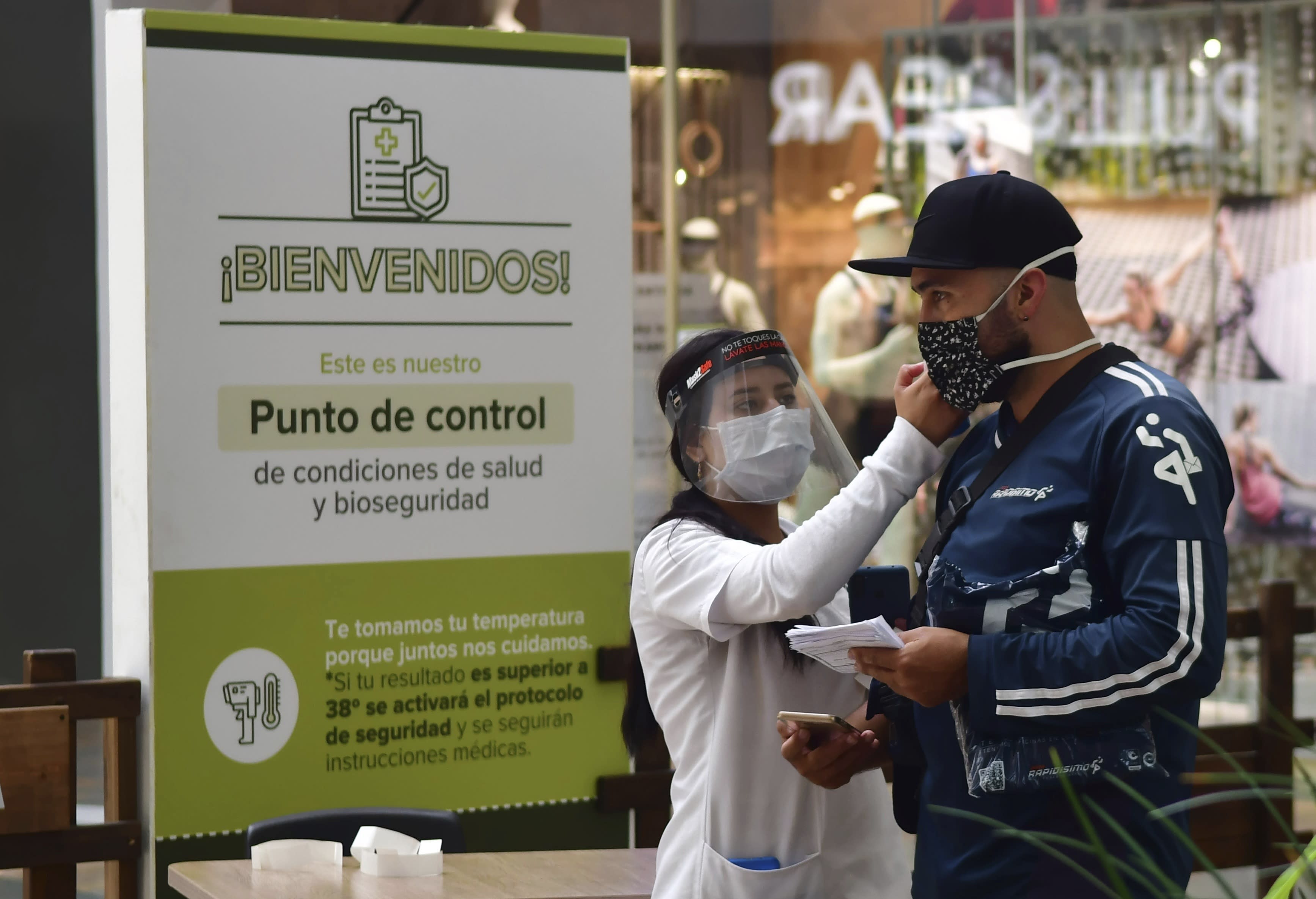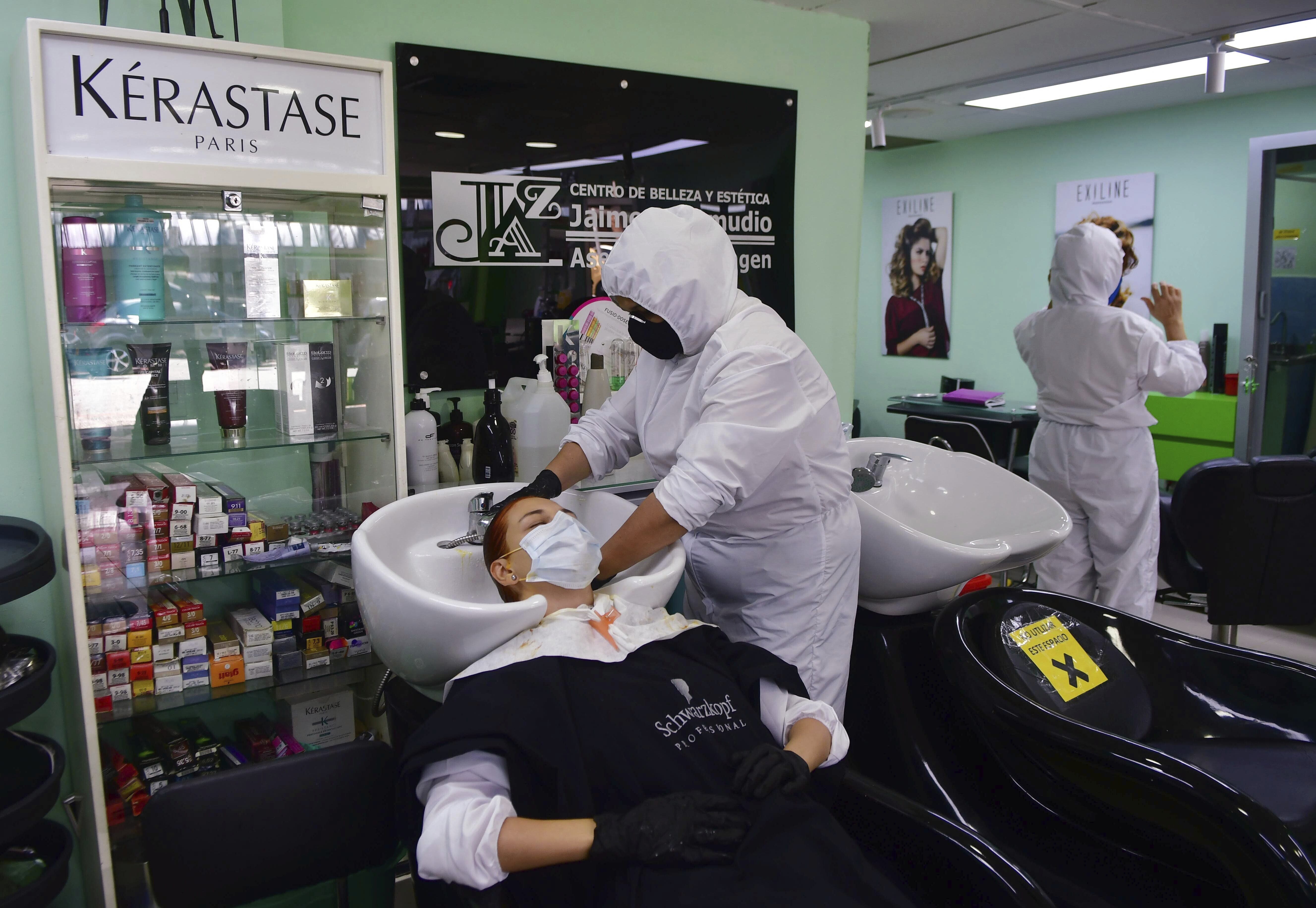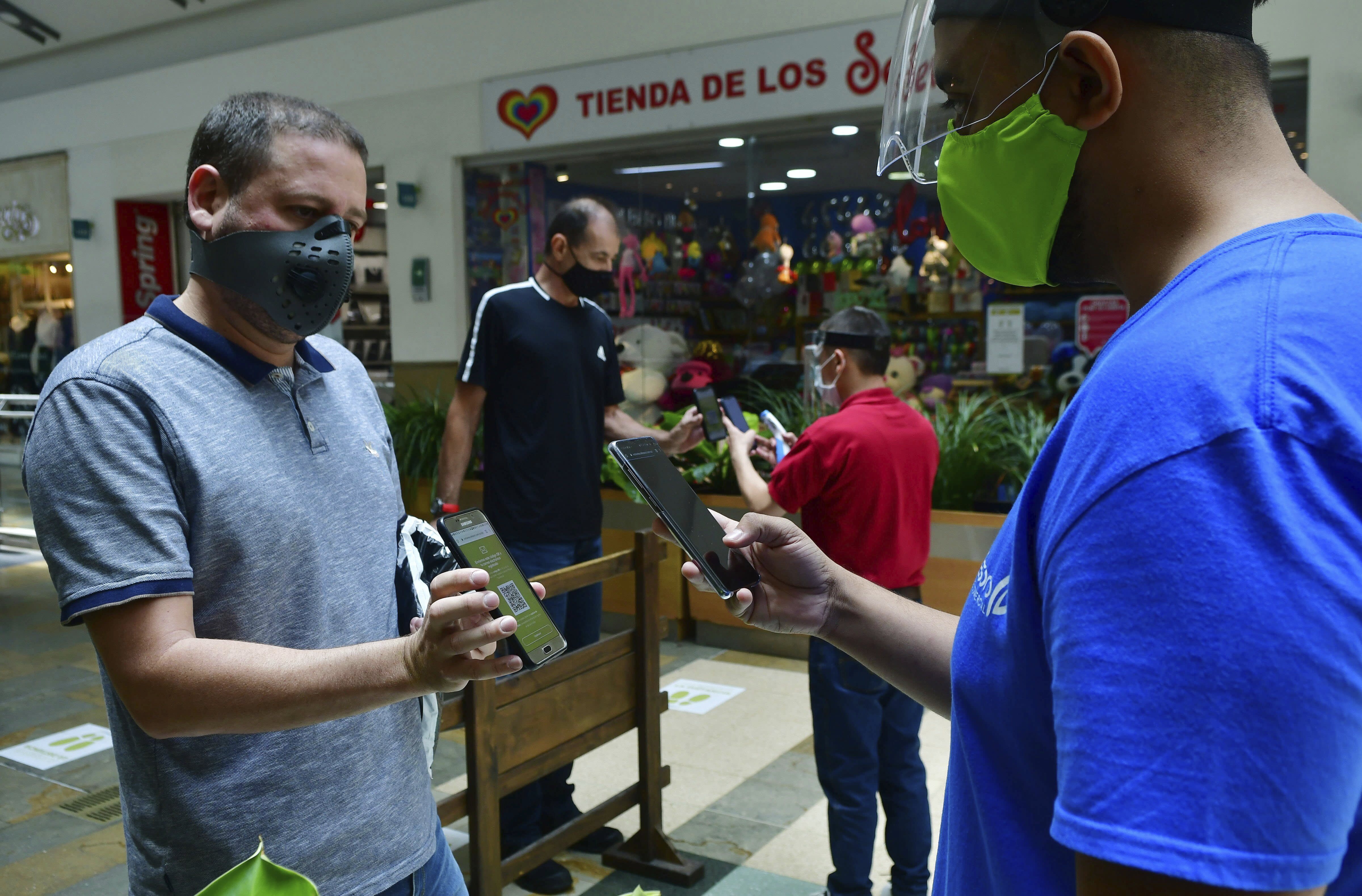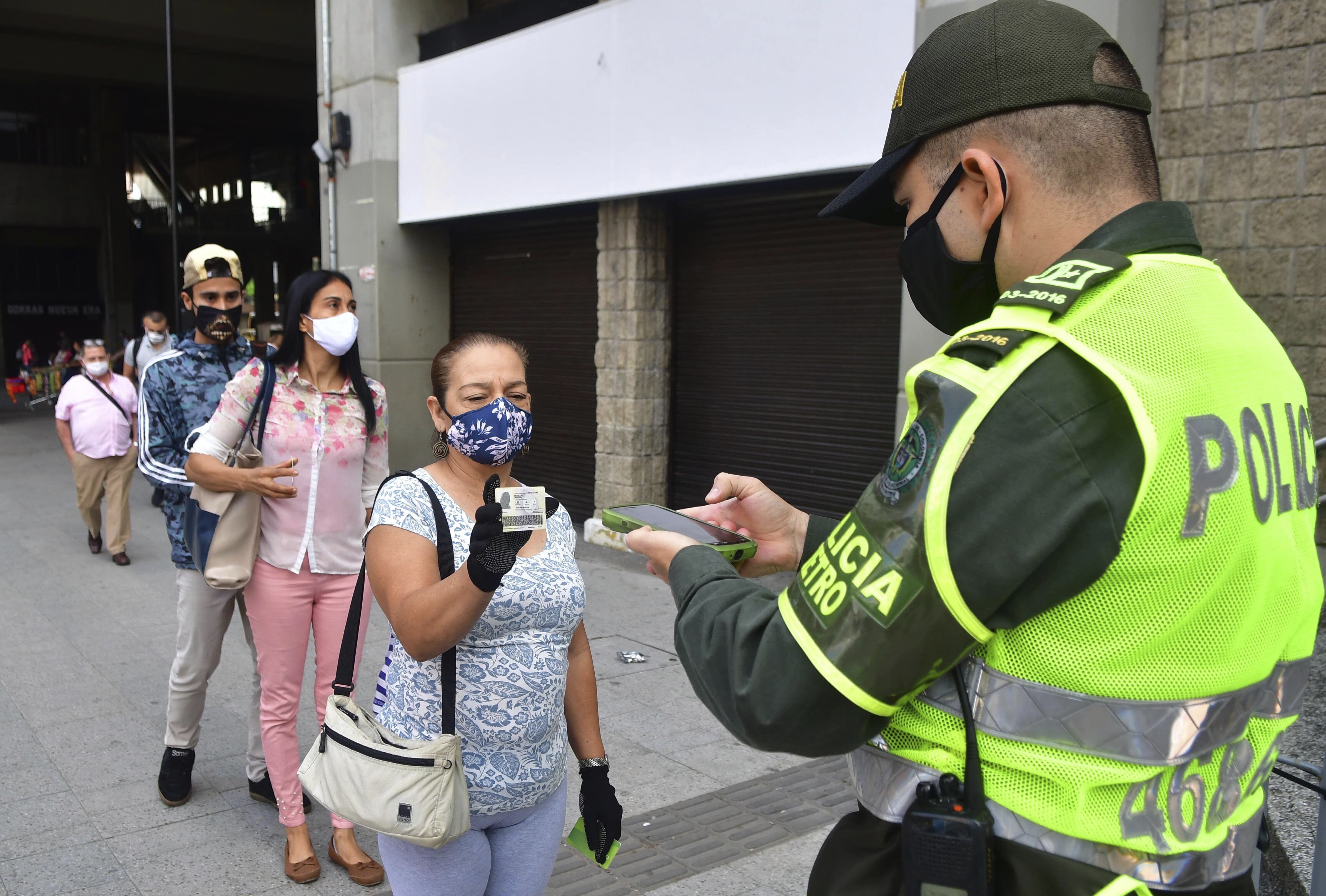Thousands stage rally in French capital against police brutality
Associated Press Reporters PA Media: World News 13 June 2020
Thousands of people have gathered in Paris to denounce police brutality and discrimination.
Shouts rose from the largely black crowd as a group of white extreme-right activists climbed a building and unfurled a huge banner denouncing “anti-white racism”. Others tried to tear the banner down.
Police have surrounded the area, braced for potential violence.

View photos
The march was organised by supporters of Adama Traore (AP)More
There have been several clashes at largely peaceful demonstrations around France, inspired by the Black Lives Matter movement and global protests in the wake of George Floyd’s death.
The march in Paris was led by supporters of Adama Traore, a 24-year-old French black man who died in 2016.
Mr Traore did not have his identity card on him and reportedly ran as the police approached.
A huge portrait showed half of Mr Traore’s face, half of Mr Floyd’s.

Residents of a building cut up a banner which was lowered
from the roof of a building by far-right protesters (AP)
Mr Traore’s sister Assa told the crowd: “We are all demanding the same thing – fair justice for everyone.”
She said her brother was also handcuffed and held down by police before he died, much like Mr Floyd had been last month.
A final report released last month cleared three officers of wrongdoing, triggering renewed protests over Mr Traore’s death.
This week, the French government banned chokeholds.
Protesters take to Paris streets in fresh march for racial justice
RFI 13 June 2020

Thousands of people have turned out for fresh demonstrations against alleged police brutality and racism in central Paris and other major French cities. The protests come against a backdrop of mounting anger among police officers who reject the accusations.
At least 6,000 protesters gathered at Place de la République in Paris on Saturday to protest against alleged police brutality and racism.
The march, which is to head towards Opéra from 2:30pm, was organised by the Adama Traoré committee, created to call for justice for the young black man who died in police custody in 2016 in the Paris region.
How should France respond to protests against alleged racist policing?
Adama Committee
"We call on all the cities in France to come and demonstrate with us to demand truth and justice for Adama and all the victims of the police or gendarmerie," the committee said.
The Adama committee drew some 20,000 people on 2 June to the Paris court, and has become the spearhead of the fight against police violence.
Its discourse has broadened from denouncing police violence to denouncing alleged "systemic racism", finding a powerful echo after the death of George Floyd, an African-American killed on 25 May in Minneapolis by a white policeman, which sparked a worldwide wave of indignation.
Other marches for racial justice are planned in Marseille, Lyon, Montpellier, Nantes, Saint-Nazaire, Bordeaux and in Strasbourg on Sunday.
French police protests
French police staged protests for a second day Friday, angry at accusations of racism in their ranks. They slammed top officials for failing to defend the force against the allegations.
Several dozen officers blocked traffic in a wildcat march down the Champs-Elysées avenue in Paris, carrying banners proclaiming: "No police, no peace!" and "The police aren't racist."
Border police at Orly airport south of Paris and officers in Bordeaux, Marseille and other cities threw handcuffs, armbands and other equipment on the ground while standing in formation, with many shouting for the resignation of Interior Minister Christophe Castaner.
Castaner infuriated officers this week with a pledge of "zero tolerance" for police racism after 20,000 people massed at the Paris courthouse on 2 June in an echo of the Black Lives Matter protests in America.
He also said police would no longer be allowed to use chokeholds to detain suspects, a move derided by many officers as an unfeasible concession that could make their jobs more perilous.
"The police are not racist... they save people's lives no matter the colour of their skin," Fabien Vanhemelryck, head of the Alliance union, told journalists on Friday.
Castaner met police representatives on Thursday and Friday.
"It's not just the interior minister... the president must make sure the police are respected," Vanhemelryck said.
Some police unions have threatened to carry out only minimal duties, since France forbids strike action by law enforcement agents.
President Emmanuel Macron could address the heightened tensions in a TV speech on Sunday evening.
Mr Traore’s sister Assa told the crowd: “We are all demanding the same thing – fair justice for everyone.”
She said her brother was also handcuffed and held down by police before he died, much like Mr Floyd had been last month.
A final report released last month cleared three officers of wrongdoing, triggering renewed protests over Mr Traore’s death.
This week, the French government banned chokeholds.
Protesters take to Paris streets in fresh march for racial justice
RFI 13 June 2020

Thousands of people have turned out for fresh demonstrations against alleged police brutality and racism in central Paris and other major French cities. The protests come against a backdrop of mounting anger among police officers who reject the accusations.
At least 6,000 protesters gathered at Place de la République in Paris on Saturday to protest against alleged police brutality and racism.
The march, which is to head towards Opéra from 2:30pm, was organised by the Adama Traoré committee, created to call for justice for the young black man who died in police custody in 2016 in the Paris region.
How should France respond to protests against alleged racist policing?
Adama Committee
"We call on all the cities in France to come and demonstrate with us to demand truth and justice for Adama and all the victims of the police or gendarmerie," the committee said.
The Adama committee drew some 20,000 people on 2 June to the Paris court, and has become the spearhead of the fight against police violence.
Its discourse has broadened from denouncing police violence to denouncing alleged "systemic racism", finding a powerful echo after the death of George Floyd, an African-American killed on 25 May in Minneapolis by a white policeman, which sparked a worldwide wave of indignation.
Other marches for racial justice are planned in Marseille, Lyon, Montpellier, Nantes, Saint-Nazaire, Bordeaux and in Strasbourg on Sunday.
French police protests
French police staged protests for a second day Friday, angry at accusations of racism in their ranks. They slammed top officials for failing to defend the force against the allegations.
Several dozen officers blocked traffic in a wildcat march down the Champs-Elysées avenue in Paris, carrying banners proclaiming: "No police, no peace!" and "The police aren't racist."
Border police at Orly airport south of Paris and officers in Bordeaux, Marseille and other cities threw handcuffs, armbands and other equipment on the ground while standing in formation, with many shouting for the resignation of Interior Minister Christophe Castaner.
Castaner infuriated officers this week with a pledge of "zero tolerance" for police racism after 20,000 people massed at the Paris courthouse on 2 June in an echo of the Black Lives Matter protests in America.
He also said police would no longer be allowed to use chokeholds to detain suspects, a move derided by many officers as an unfeasible concession that could make their jobs more perilous.
"The police are not racist... they save people's lives no matter the colour of their skin," Fabien Vanhemelryck, head of the Alliance union, told journalists on Friday.
Castaner met police representatives on Thursday and Friday.
"It's not just the interior minister... the president must make sure the police are respected," Vanhemelryck said.
Some police unions have threatened to carry out only minimal duties, since France forbids strike action by law enforcement agents.
President Emmanuel Macron could address the heightened tensions in a TV speech on Sunday evening.
French hold protests against police violence
Sofia BOUDERBALA et Alice LEFEBVRE AFP 13 June 2020

Thousands of people turned out in Paris and other cities to protest against police violence amid calls for change
Thousands of people gathered across France on Saturday to protest at racism and police violence as public anger grows after a raft of complaints against officers and in the wake of the death of George Floyd in the United States.
Several thousand people congregated in central Paris mid-afternoon to answer a call to protest by a pressure group representing Adama Traore, a young black man who died in police custody in 2016.
The rallies came at the end of week when France's police watchdog said it had received almost 1,500 complaints against officers last year -- half of them for alleged violence.
Traore's sister Assa Traore called on those attending the rally to "denounce the denial of justice, denounce social, racial, police violence," renewing a call for an investigation into her sibling's death.
"The death of George Floyd -- this Afro-American killed on May 25 in Minneapolis by a white policeman -- is a direct echo of my brother's death. It's the same thing in France, our brothers are dying," she said, vowing to continue the fight for justice.

Government spokesman Sibeth Ndiaye suggested in an interview with Saturday's Le Monde that there should be "constructive debate" regarding race with efforts redoubled against racial discriminations".
But some police have spoken out against the portrayal of the police as racist.
Frederic Lagache of the police union Alliance said he hoped Macron would receive a delegation as many officers felt their "honour had been injured" over the widespread criticism of the force.
Sofia BOUDERBALA et Alice LEFEBVRE AFP 13 June 2020

Thousands of people turned out in Paris and other cities to protest against police violence amid calls for change
Thousands of people gathered across France on Saturday to protest at racism and police violence as public anger grows after a raft of complaints against officers and in the wake of the death of George Floyd in the United States.
Several thousand people congregated in central Paris mid-afternoon to answer a call to protest by a pressure group representing Adama Traore, a young black man who died in police custody in 2016.
The rallies came at the end of week when France's police watchdog said it had received almost 1,500 complaints against officers last year -- half of them for alleged violence.
Traore's sister Assa Traore called on those attending the rally to "denounce the denial of justice, denounce social, racial, police violence," renewing a call for an investigation into her sibling's death.
"The death of George Floyd -- this Afro-American killed on May 25 in Minneapolis by a white policeman -- is a direct echo of my brother's death. It's the same thing in France, our brothers are dying," she said, vowing to continue the fight for justice.

A number of marchers held aloft banners reading "justice for Adama".
Other banners read "In the country of human rights the police kill."
Binta Kamara, 18, said she had come "to support black people, minorities, to show solidarity. I am young and the future belongs to us. We have to change things."
Elisa, a 27-year-old student, said she did not routinely favour an "anti-cop discourse" but added it was "clear there is a problem of racism and fear of the police today."
Other rallies were being held in cities from Marseille and Montpellier in the south to Nantes and Bordeaux in the west.
- Amnesty appeal -
French President Emmanuel Macron, due to address the nation on Sunday, notably on the easing of lockdowns, had Thursday noted the need not to "lose the youth" as feelings run ever higher in the wake of the Floyd case.
Macron on Wednesday dubbed racism "an illness which touches all society."
Interior Minister Christophe Castaner has promised "zero tolerance" of racism in law enforcement, saying it is clear some officers "have failed in their Republican duty", citing several instances of racist and discriminatory remarks" that have come to light.
Amnesty International meanwhile appealed for "a systematic reform of police practices" in France.
"The seriousness of the situation requires a global response from the authorities," read a statement from the NGO.
Other banners read "In the country of human rights the police kill."
Binta Kamara, 18, said she had come "to support black people, minorities, to show solidarity. I am young and the future belongs to us. We have to change things."
Elisa, a 27-year-old student, said she did not routinely favour an "anti-cop discourse" but added it was "clear there is a problem of racism and fear of the police today."
Other rallies were being held in cities from Marseille and Montpellier in the south to Nantes and Bordeaux in the west.
- Amnesty appeal -
French President Emmanuel Macron, due to address the nation on Sunday, notably on the easing of lockdowns, had Thursday noted the need not to "lose the youth" as feelings run ever higher in the wake of the Floyd case.
Macron on Wednesday dubbed racism "an illness which touches all society."
Interior Minister Christophe Castaner has promised "zero tolerance" of racism in law enforcement, saying it is clear some officers "have failed in their Republican duty", citing several instances of racist and discriminatory remarks" that have come to light.
Amnesty International meanwhile appealed for "a systematic reform of police practices" in France.
"The seriousness of the situation requires a global response from the authorities," read a statement from the NGO.

Government spokesman Sibeth Ndiaye suggested in an interview with Saturday's Le Monde that there should be "constructive debate" regarding race with efforts redoubled against racial discriminations".
But some police have spoken out against the portrayal of the police as racist.
Frederic Lagache of the police union Alliance said he hoped Macron would receive a delegation as many officers felt their "honour had been injured" over the widespread criticism of the force.















